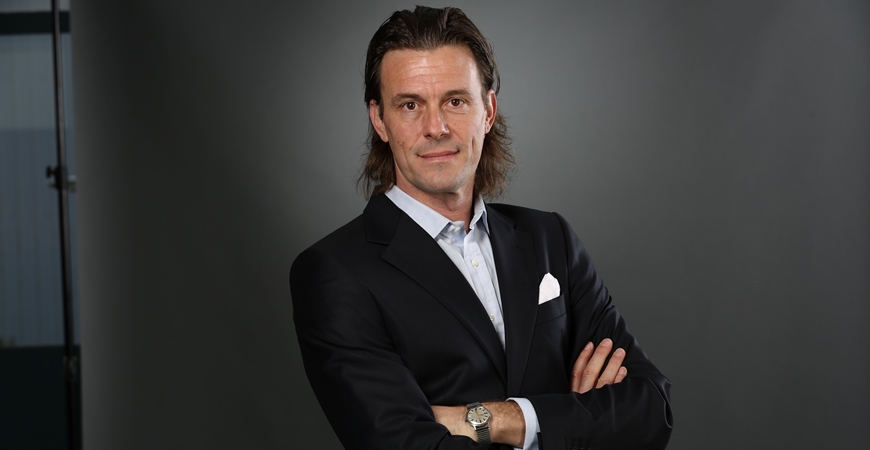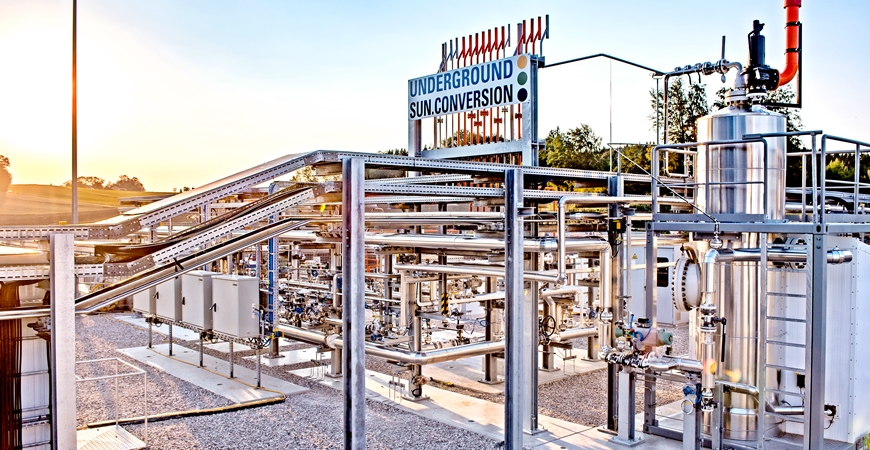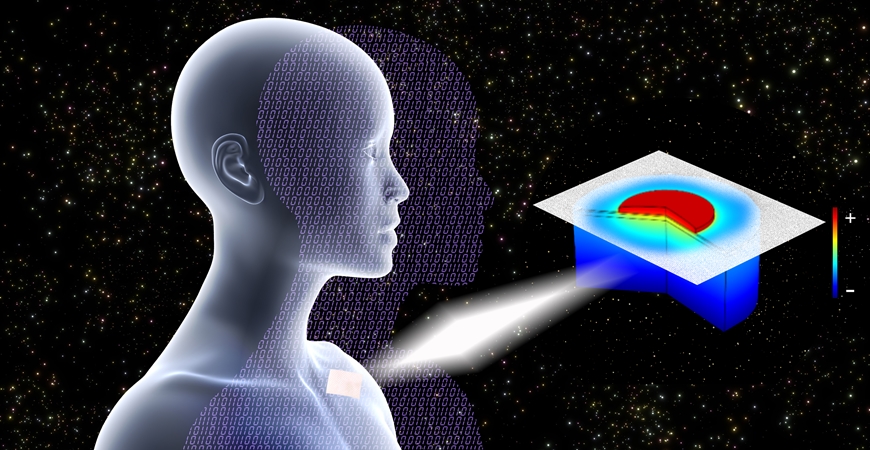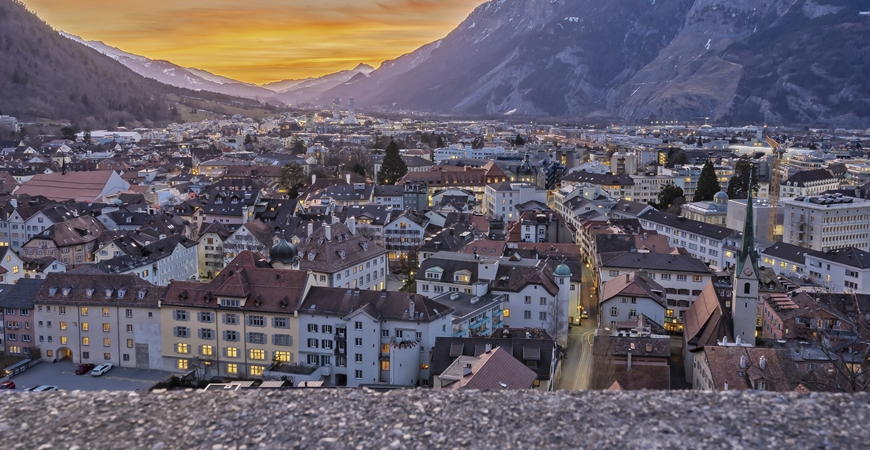
Never miss an issue
Subscribe to our magazine
In brief

When stretched to align accelerator components at CERN to the micrometer wires can fray over time. This can lead to inaccuracies in measurements. Empa researchers are now developing a metallized yarn coated with a special polymer that can align components over time without losing tension.
>>>>

Empa researchers have analyzed the entire material and energy flows of the Swiss economy. Their synthesis report called MatCH ("Material flows Switzerland") now provides important data and comparisons. It is interesting to note that every year Switzerland becomes "heavier" by 52 million tons due to imports that remain in the country. 12 million tons of material are disposed of, and 18 million tons are exported. The study was mandated by the Swiss Federal Office for the Environment (FOEN).
>>>>

At first glance, Empa researcher Evgeniia Gilshtein's idea seems inconspicuous – or more precisely, invisible. What initially looks like a simple transparent film conceals a whole new level of security. Invisible buttons are printed with conductive ink on the transparent carrier material, the position of which is known only to insiders. Such circuits can be connected to a door lock as an access code, for instance. If the buttons on the polymer film are pressed in the correct order, the door opens.
>>>>

Recycling
With a pinch of rubber
Swiss drivers wear out countless tires. Instead of incinerating them, they could be reused locally: The asphalt of various countries has long contained rubber from used tires. Empa and its partners from industry are adopting this idea for potential applications in Switzerland.
>>>>

Editorial
Thinking in circles
Almost everything has a beginning and an end: life, the Corona crisis (hopefully), Donald Trump's presidency – and our approach to consumer products. Produce, use, discard, dispose of. It is obvious that this generates an enormous amount of waste, and many valuable materials are lost. It is also obvious that our natural resources are finite.
The logical consequence is that we must finally switch from throwaway to recycling mode. In other words: (Almost) nothing is waste, (almost) everything is a resource. This won't work in every situation, but we should at least try.
For instance, by converting the greenhouse gas CO2 from the atmosphere into climate-neutral methane. This closed carbon cycle, which we are exploring in our mobility demonstrator move, is also the subject of a new exhibition at the Swiss Museum of Transport. The same chemistry is also mastered by microbes deep down in the earth's crust. A European research project wants to take advantage of this to produce CO2-neutral methane in the deep.
Even old car tires should not simply end up in waste incineration plants or landfills; Empa researchers are using them to produce a new type of asphalt and test its suitability for real-world applications. The discovery of various strains of bacteria from chemical waste landfills shows that, sometimes, something useful can come out of a landfill. These hardy microbes decompose even the most stable of environmental toxins - completely biologically.
Michael Hagmann, Head of Communication

Energy storage
Solar energy from the deep
During the winter months, renewable energy is in short supply throughout Europe. An international project is now considering an unconventional solution: Renewable hydrogen and carbon dioxide are pumped into the ground together, where naturally occurring microorganisms convert the two substances into methane, the main component of natural gas.
>>>>

Building stock
First sort, then refurbish
Switzerland's building stock is quite impressive. There are around 1.8 million buildings in the country, but only one percent of this building stock is renovated each year. In other words, it will take 100 years for the entire building stock in the country to be renovated – which would be too slow to achieve the energy transition. But before politicians decide on stimulating subsidies, this daunting task must first be structured: Which measures make sense for which buildings? And where to start?
>>>>

Personalized medicine
The simulated patient
Digital twins enable customized medical therapies. Empa researchers have now modeled several hundred such avatars based on real people and treated them experimentally. For the first time, the digital twins received feedback from real patients.
>>>>

Optics
Molecules in collective ecstasy
When fluorescent dye molecules nestle perfectly together, something completely new is created: an excited state distributed over many molecules. Such collective excitations can be used in a variety of ways – for organic solar panels, in sensors, for ultrafast data transmission or in microscopy, for example. Empa researchers, together with colleagues from ETH Zurich, EPFL, the Paul Scherrer Institute (PSI) and IBM Research Zurich, have succeeded in making such chemical light amplifiers ten times more efficient than before.
>>>>

Medical technology
Band-aid for internal wounds
Closing wounds in the digestive tract is a challenge. Empa researchers have now developed a polymer patch for the intestine that can be used to stably bond and seal internal injuries.
>>>>

Insights
Cough, please!
What happens when someone coughs? How do droplets containing pathogens such as SARS-CoV-2 spread in the surrounding air? Although models describing such processes do exist, Empa researchers want to improve them – with the help of their specially developed coughing machine. As if from lung wings, two tubes expel compressed air out of the machine's "mouth" (see center of image, below the white bottle). With a precise control system, the machine simulates different coughing events along with the emitted droplets. The air is heated to body temperature and has a relative humidity of 98 percent to come close to the natural model – with or without a mask. (Image: Empa)
>>>>

Simulation
Composing new energy systems
Modern, decentralized energy systems are a highly complex matter. Planning them in an optimal and cost-efficient way is a major challenge for energy planners. Sympheny, an Empa spin-off, offers a software that helps planners to find the most suitable energy concept for a building, neighborhood or even an entire city, and thus to meet their sustainability and energy efficiency goals.
>>>>
On the road

On Sunday, 7 March 2021, the "Sendung mit der Maus" celebrated its 50th birthday. For the anniversary edition of the most successful children's program on German television, Armin Maiwald, presenter from the very beginning, visited NEST at Empa in Dübendorf. The topic: How will we build in a circular way in the future?
>>>>

Together with partners Avenergy Suisse and Hyundai, Empa is presenting a new permanent exhibition on sustainable fuels of the future at the Swiss Museum of Transport as of March 2021. Among other things, the focus is on questions like: How does green electricity find its way into the tank? And: Which fuel makes sense for which purpose? In an interactive game, visitors can even virtually produce hydrogen themselves.
>>>>

Sustainable construction requires radical innovations – such as those being investigated and implemented in NEST at Empa. Inspired by the Swiss example, the international research platform ReConstruct organized an online discussion on solutions for climate-neutral building on 22 March. Peter Richner, deputy CEO of Empa, joined Austrian Climate Minister Leonore Gewessler at the virtual roundtable.
>>>>

Lidl Switzerland aims to operate its stores even more sustainably and efficiently in the future. Together with Empa, the company now puts this plan into practice. First, the energy consumption and the interaction of various operational systems in existing stores will be analyzed. Then, the Empa researchers will develop an optimized concept for the stores of the future based on the findings of their analysis.
>>>>

Interview
Living in the crystal ball
Alain Aerni is trying to look into the future: His "Crystalball" energy control system combines photovoltaics, heat pumps and charging stations and uses weather reports to predict energy requirements. In late 2020 he presented his system at an event at the Empa Academy.
>>>>

Chemical contamination
Detoxifiers from the landfill
Bacteria from an Indian landfill could help eliminate contaminated chemicals. The focus is on pesticides such as lindane or brominated flame retardants, which accumulate in nature and in food chains. Researchers at Empa and Eawag used these bacteria to generate enzymes that can break down these dangerous chemicals.
>>>>

